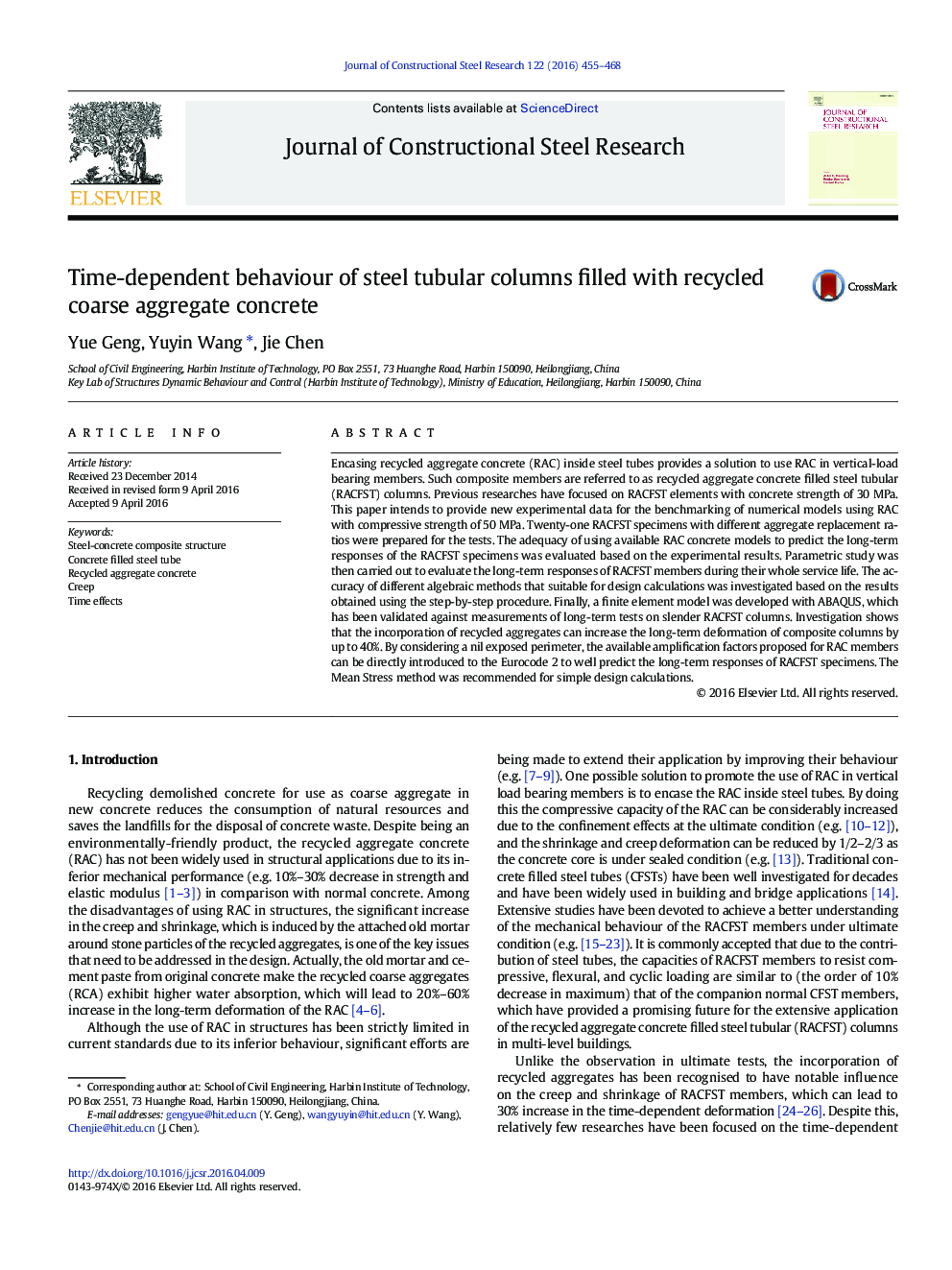| Article ID | Journal | Published Year | Pages | File Type |
|---|---|---|---|---|
| 6751493 | Journal of Constructional Steel Research | 2016 | 14 Pages |
Abstract
Encasing recycled aggregate concrete (RAC) inside steel tubes provides a solution to use RAC in vertical-load bearing members. Such composite members are referred to as recycled aggregate concrete filled steel tubular (RACFST) columns. Previous researches have focused on RACFST elements with concrete strength of 30Â MPa. This paper intends to provide new experimental data for the benchmarking of numerical models using RAC with compressive strength of 50Â MPa. Twenty-one RACFST specimens with different aggregate replacement ratios were prepared for the tests. The adequacy of using available RAC concrete models to predict the long-term responses of the RACFST specimens was evaluated based on the experimental results. Parametric study was then carried out to evaluate the long-term responses of RACFST members during their whole service life. The accuracy of different algebraic methods that suitable for design calculations was investigated based on the results obtained using the step-by-step procedure. Finally, a finite element model was developed with ABAQUS, which has been validated against measurements of long-term tests on slender RACFST columns. Investigation shows that the incorporation of recycled aggregates can increase the long-term deformation of composite columns by up to 40%. By considering a nil exposed perimeter, the available amplification factors proposed for RAC members can be directly introduced to the Eurocode 2 to well predict the long-term responses of RACFST specimens. The Mean Stress method was recommended for simple design calculations.
Keywords
Related Topics
Physical Sciences and Engineering
Engineering
Civil and Structural Engineering
Authors
Yue Geng, Yuyin Wang, Jie Chen,
